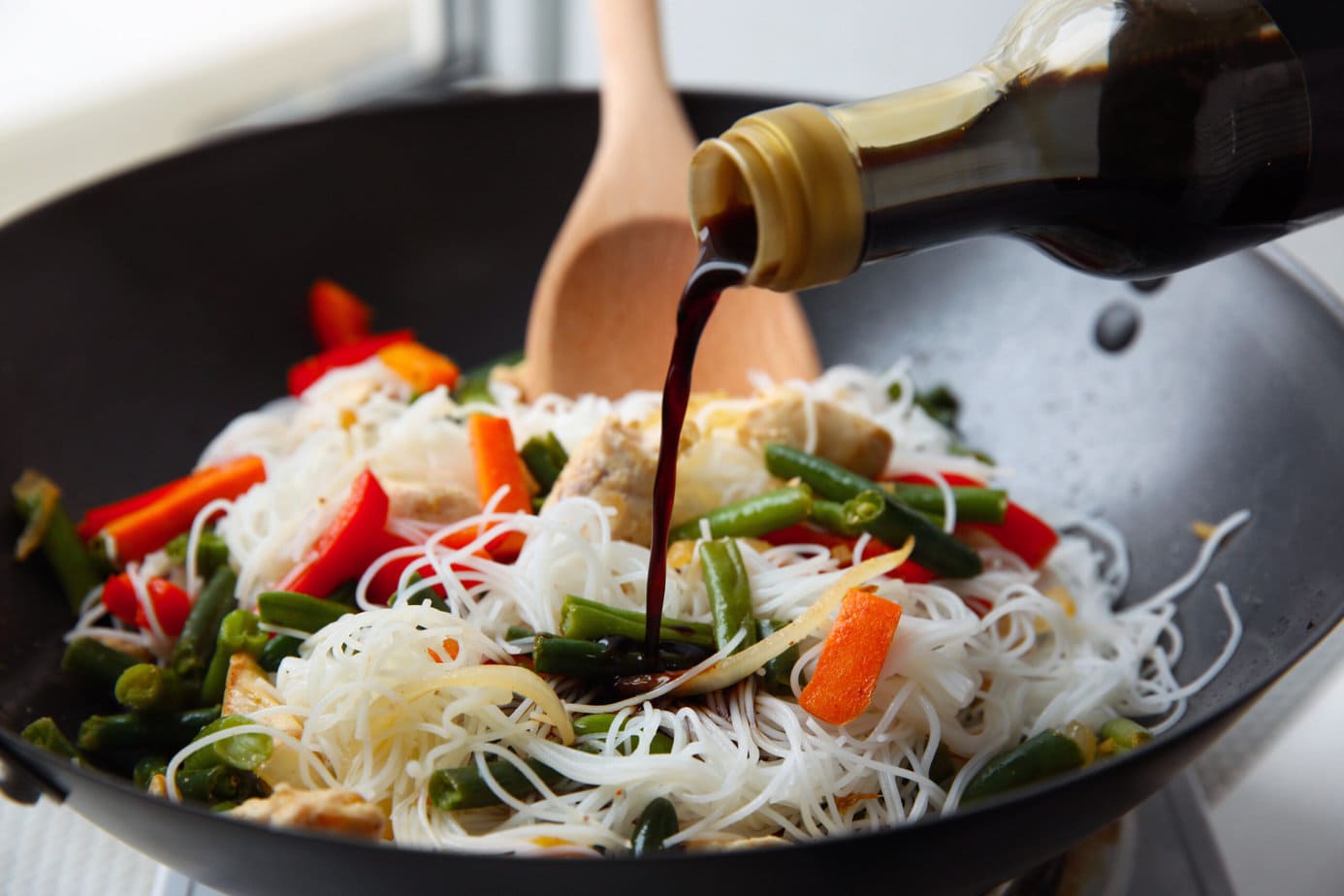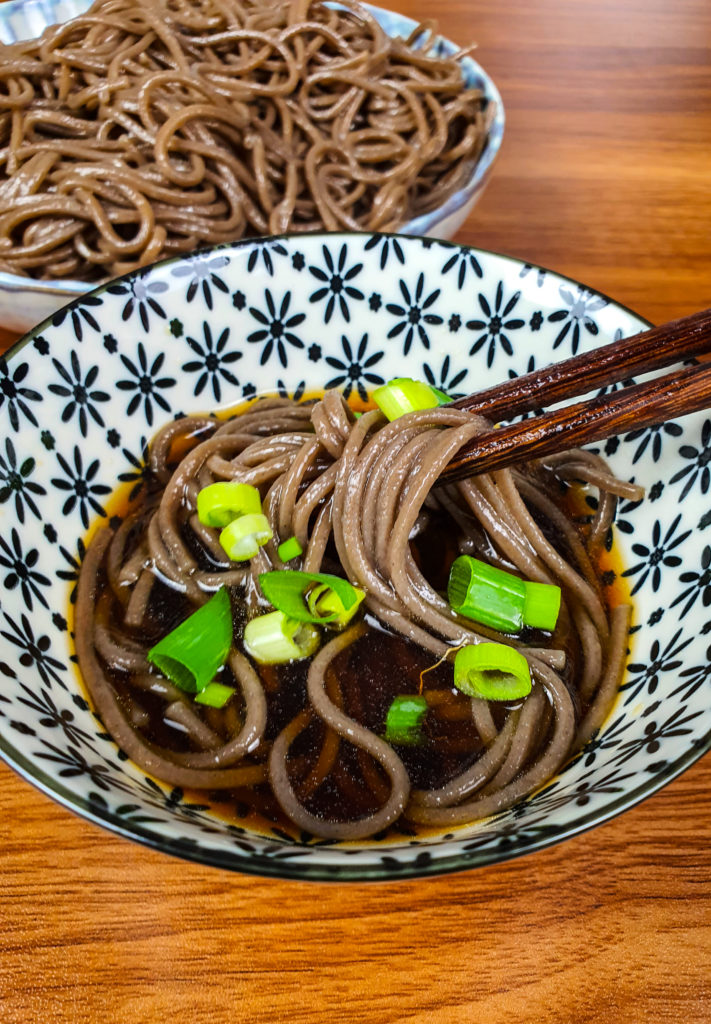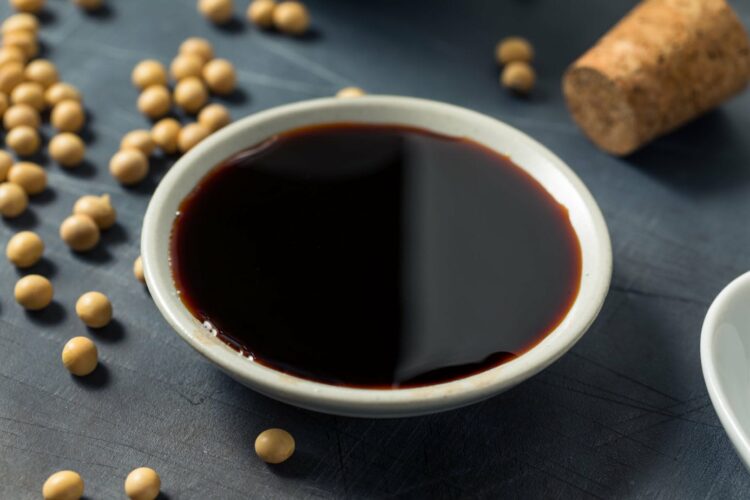Tamari (also called tamari shoyu) is a Japanese sauce made from fermented soybeans. It has a thicker consistency and a more balanced flavor than Chinese soy sauce, which makes it perfect for dipping. It is also vegan and naturally gluten-free. Pour tamari straight from the bottle to add salt, umami, and extra nutrients to your dishes.
What is tamari sauce?
You might think soy sauce is a single condiment, but there are dozens of soy-based sauces across Asia, each with its own flavor, color, and texture.
Tamari is one of them and has a distinctive taste, largely because it is produced differently from other soy sauces. It is pressed from the liquid that seeps out of aging miso paste (fermented soybeans). Soy sauce, by contrast, is brewed from a fermented blend of soybeans, wheat, and other grains. For that reason, tamari is usually a little more expensive than soy sauce.

The difference between soy sauce and tamari
While the many varieties of soy sauce are found throughout Asia, tamari is distinctly Japanese. The biggest difference is that tamari is usually made without wheat, whereas soy sauce often contains wheat (sometimes up to 50 percent of the recipe).
Tamari is made with only water, soybeans, and salt. A typical bottle of soy sauce, on the other hand, lists wheat and a preservative such as sodium benzoate. This shorter ingredient list gives tamari a richer flavor, thicker body, and darker color than most Chinese soy sauces.
You can swap tamari and soy sauce in most recipes, but keep in mind that each will bring its own subtle flavor difference.
How to use tamari?
Thanks to its viscosity and balanced flavor, tamari is ideal as a dipping sauce. In fact, it pairs better with sushi than soy sauce because it will not overpower the fish with saltiness.

You can also stir tamari into soups, stews, marinades, stir-fries, and other Asian sauces, or drizzle it straight from the bottle over noodles, dumplings, fish (especially raw fish such as sashimi), or tofu.
Try it, for example, in my yakitori sauce or the teriyaki chicken skewer marinade
Tamari mixed with a little sugar is also a popular glaze for roasted nuts, especially almonds.
What does tamari taste like?
Tamari tastes like a less salty, more nuanced soy sauce because it is made from 100% soybeans. The wheat in traditional soy sauce can lend a sharp, almost vinegary note that is absent from tamari.
Instead, tamari is packed with umami – a rich, savory, “mouth-watering” quality found in beef, cooked mushrooms, tomato paste, aged cheese, and dried fish. It can add a “meaty” depth to vegetarian and vegan dishes.

Where to buy tamari?
With the growing popularity of Asian cuisine, finding ingredients such as tamari has become much easier.
You should be able to pick up tamari in glass bottles (or large plastic jugs) in the Asian/international aisle of a well-stocked supermarket, right next to the soy sauce. If your store doesn’t carry it, look in an Asian, international, or health-food shop, or order it on Amazon.
Almost all tamari sold in Europe is labeled gluten-free, though it may still contain traces of wheat. If the bottle is marked gluten-free, it is considered safe for anyone following a gluten-free diet.
Keep in mind that regular Kikkoman brand tamari is not gluten-free.
How to store tamari?
Store tamari in its original bottle in a cool, dry, dark cupboard. Refrigeration is not required, but the flavor will not suffer if you chill it. Once opened, tamari keeps indefinitely as long as the cap is tightly closed.

